What is a Stem?
A stem is the main support of a plant, which holds the leaves, flowers, and fruits. It also helps transport water, nutrients, and food throughout the plant.
Parts of a Stem
The main parts of a stem include:
- Node: The area on the stem where leaves, branches, or flowers are attached.
- Internode: The section of the stem between two nodes.
- Bud: A small, undeveloped shoot or flower on the stem.
- Apical Meristem: The growing tip of the stem.
Functions of a Stem
The stem serves several important functions in a plant:
- Support: The stem provides structural support for the plant, holding up the leaves and flowers.
- Transport: It transports water and nutrients from the roots to the rest of the plant, and transports food produced in the leaves to other parts of the plant.
- Growth: The stem contains meristematic tissue that allows the plant to grow in length and develop new leaves and flowers.
Study Guide
Here are some key points to remember about stems:
- What is the main function of a stem?
- Identify and label the parts of a stem.
- Explain how water and nutrients are transported in a plant.
- Describe the role of meristematic tissue in stem growth.
Understanding the structure and function of stems is essential for learning about plant biology and how plants grow and develop.
[Stem] Related Worksheets and Study Guides:
.◂Science Worksheets and Study Guides Second Grade. Comparing matter
Study Guide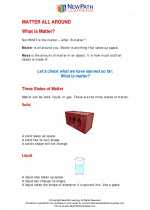 Comparing matter
Comparing matter  Activity Lesson
Activity Lesson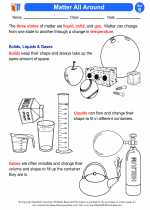 Matter All Around
Matter All Around  Worksheet/Answer key
Worksheet/Answer key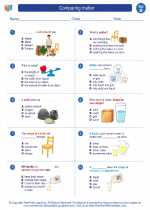 Comparing matter
Comparing matter  Worksheet/Answer key
Worksheet/Answer key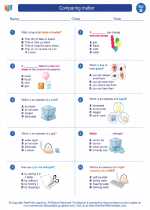 Comparing matter
Comparing matter  Worksheet/Answer key
Worksheet/Answer key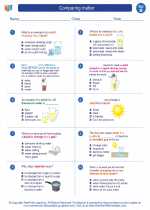 Comparing matter
Comparing matter  Vocabulary/Answer key
Vocabulary/Answer key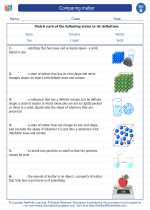 Comparing matter
Comparing matter 

 Activity Lesson
Activity Lesson
 Worksheet/Answer key
Worksheet/Answer key
 Worksheet/Answer key
Worksheet/Answer key
 Worksheet/Answer key
Worksheet/Answer key
 Vocabulary/Answer key
Vocabulary/Answer key

The resources above cover the following skills:
PHYSICAL SCIENCE (NGSS)
Matter and its Interactions
Students who demonstrate understanding can:
Construct an argument with evidence that some changes caused by heating or cooling can be reversed and some cannot.